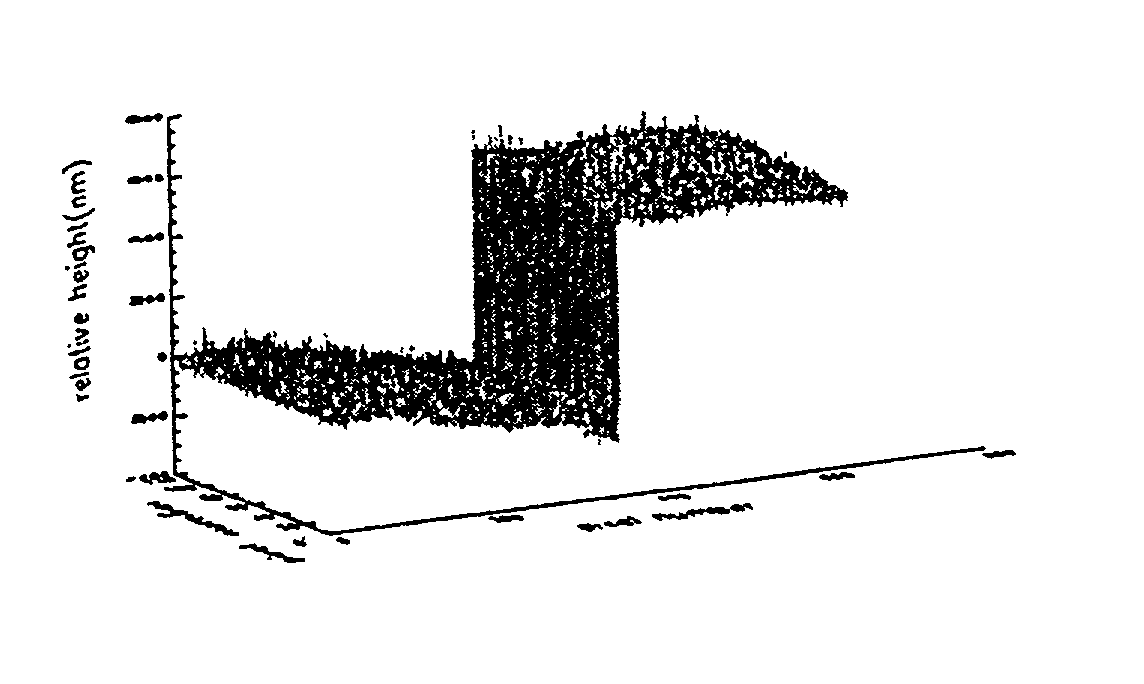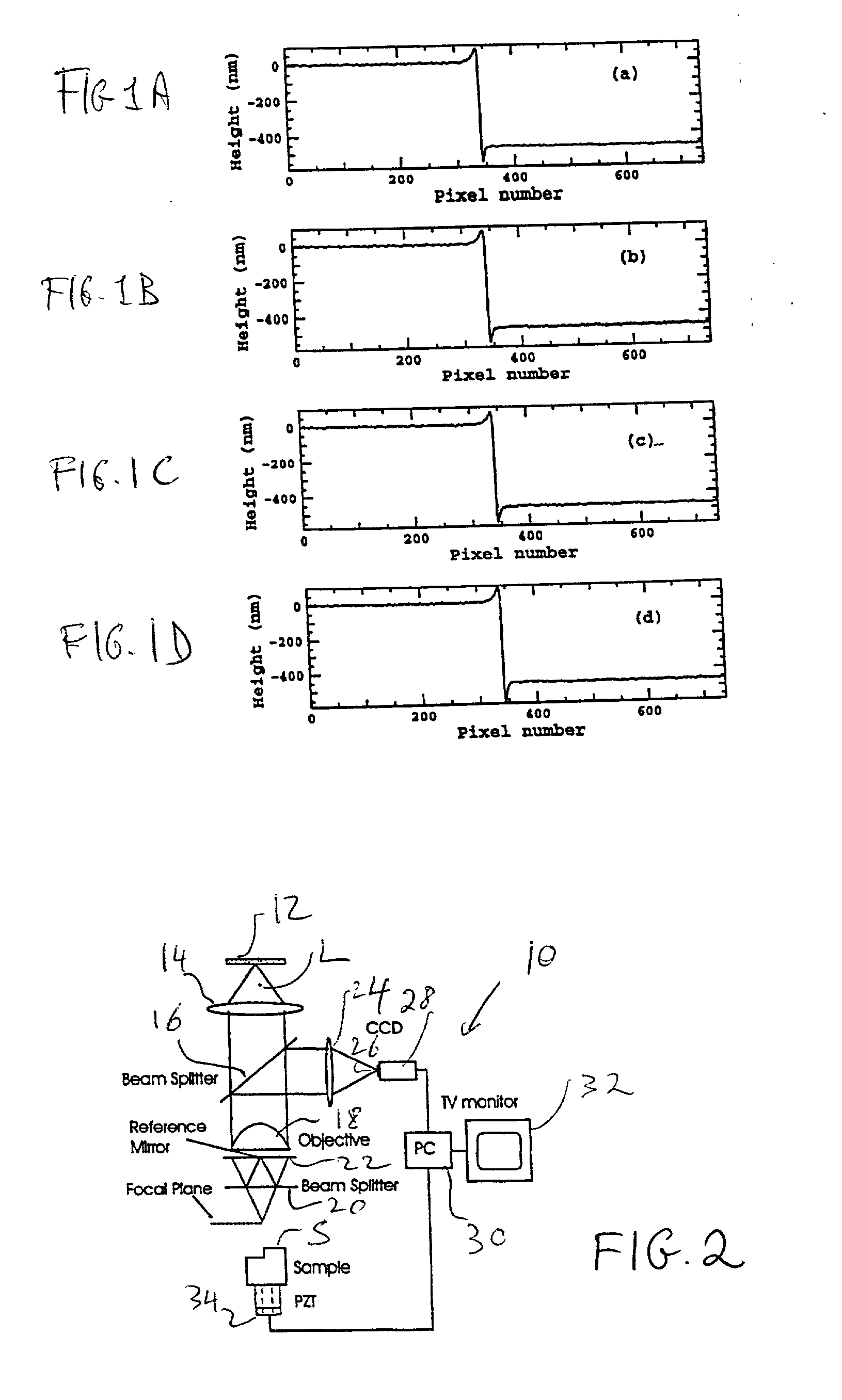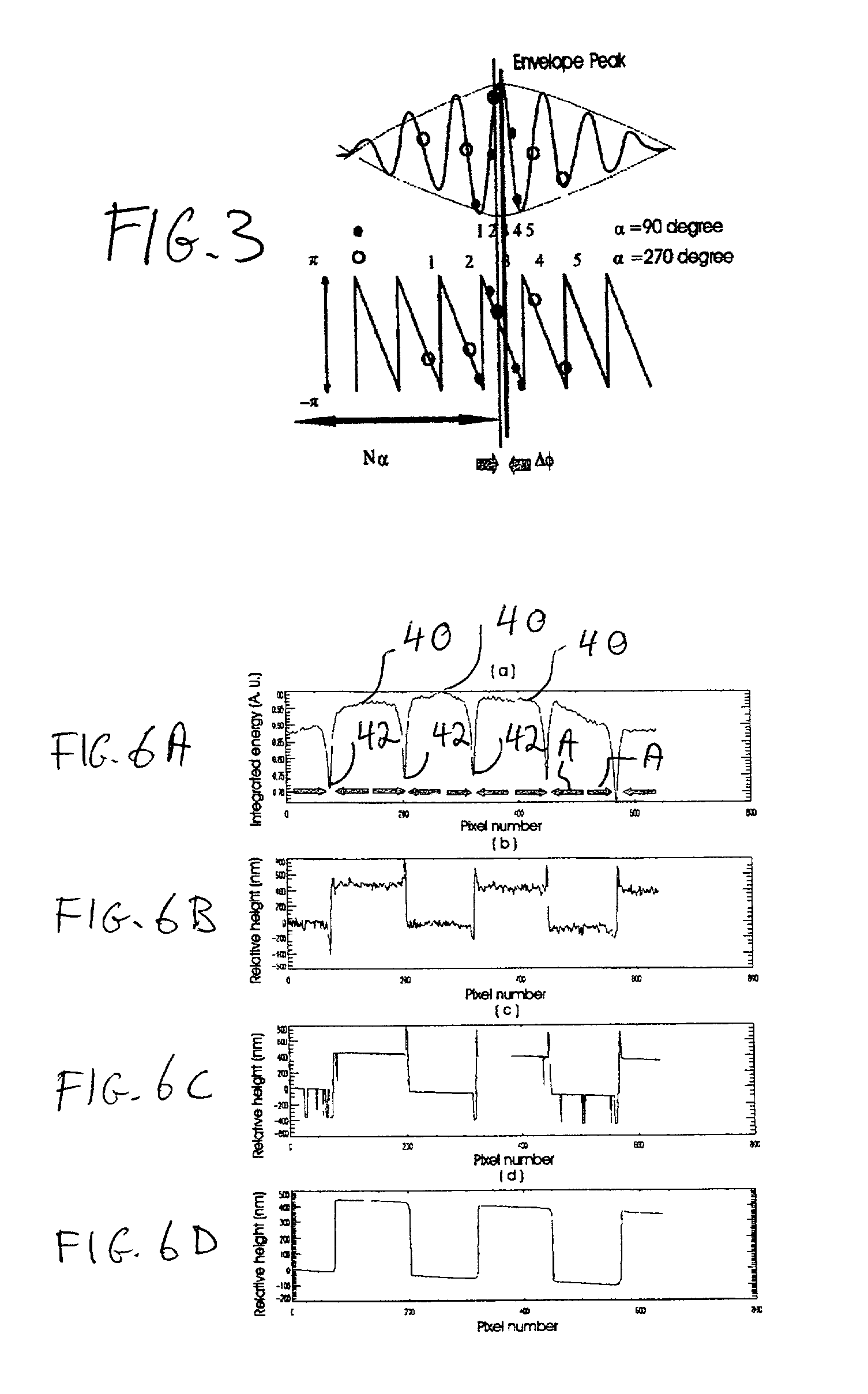Bat-wing attenuation in white-light interferometry
a technology of white light and attenuation, applied in the field of white light interferometry, can solve the problems of not working well in the vicinity of step height, and no experimental results have been reported that teach the removal of bat wings
- Summary
- Abstract
- Description
- Claims
- Application Information
AI Technical Summary
Problems solved by technology
Method used
Image
Examples
Embodiment Construction
[0028] The heart of this invention is based on the realization that bat wings at the edges of step discontinuities of surface profiles obtained by interferometric measurements result from diffraction effects that modify coherence-envelope readings more greatly than phase measurements. This property is advantageously used to provide a straight-forward criterion for correcting the profile obtained by phase data at pixels approaching the edges of step discontinuities, thereby substantially removing bat-wing effects.
[0029] As is well understood by those skilled in the art, the interference intensity distribution along the vertical scanning direction, herein called a "correlogram," is attenuated by the coherence envelope with its peak (best contrast fringes) being at about the best focus position. At the same time, this best focus position (peak of the coherence envelope) occurs when the optical paths of both arms of the interferometer are equal. Thus, by finding the peak of the coherenc...
PUM
 Login to View More
Login to View More Abstract
Description
Claims
Application Information
 Login to View More
Login to View More - R&D
- Intellectual Property
- Life Sciences
- Materials
- Tech Scout
- Unparalleled Data Quality
- Higher Quality Content
- 60% Fewer Hallucinations
Browse by: Latest US Patents, China's latest patents, Technical Efficacy Thesaurus, Application Domain, Technology Topic, Popular Technical Reports.
© 2025 PatSnap. All rights reserved.Legal|Privacy policy|Modern Slavery Act Transparency Statement|Sitemap|About US| Contact US: help@patsnap.com



